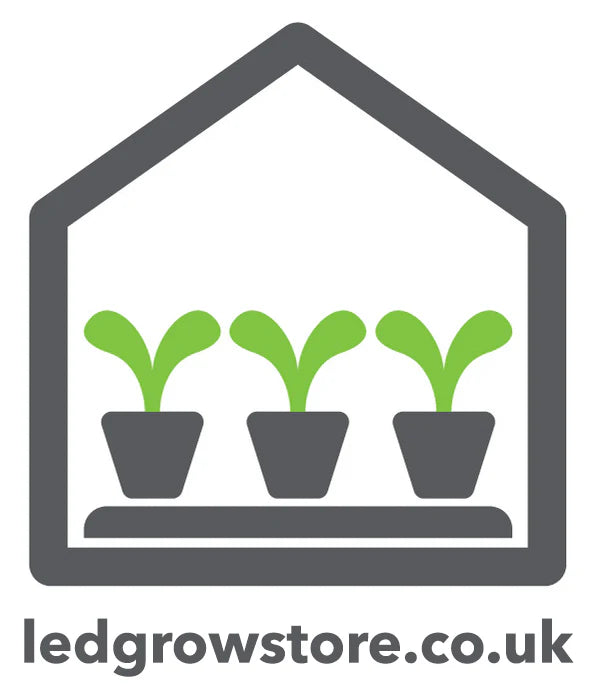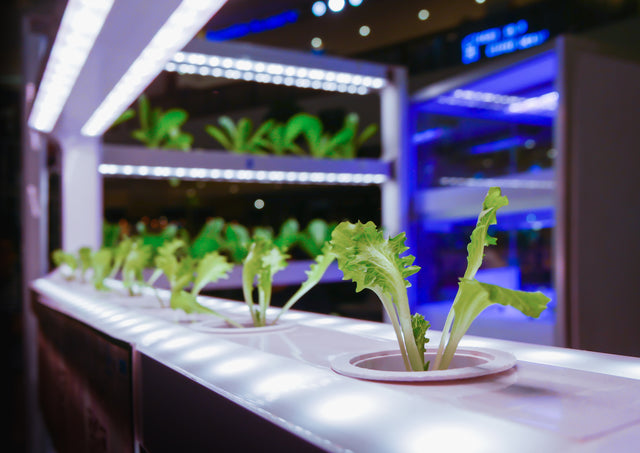LED Grow Light Essential Growing Guide
LED Grow Light Essential Growing Guide
Now that you're considering upgrading to an LED grow light, the next step is knowing how to get the best out of these excellent lighting devices. LED grow lights are designed to provide indoor plants with the optimal lighting conditions required to get through the different stages of their growth cycle. However, this is only possible when you know how to use them effectively.
Avoid Nutritional Imbalance
LED Grow Lights can impact the nutritional balance of indoor plants. The change in spectrum, intensity, and uniformity can affect plant growth. For example, higher light intensity can increase transpiration rates and lead to an increase in mineral ion concentration in the root zone, causing nutrient imbalances.
What to do: Maintaining an ideal fertilizer concentration is essential for a nutritionally balanced soil. Measure the pH and electrical conductivity (EC) of the growth medium to determine if it contains optimal nutrient concentrations for plant growth and avoid over-fertilizing. Consider adding calcium and magnesium supplements if your growing medium is nutrient-deficient.
Wattage Differences
Growers using HID/HPS lights may not be used to the lower wattage of LED Grow Lights. It's important to note that replacing a 1000W HID/HPS light with a 1000W LED Grow Light is not recommended. HID lights produce a large amount of infrared radiation, which means grow rooms require higher wattage models.
What to do: LED Grow Lights are optimized for safer and more efficient plant growth, so introducing LED Grow Lights with similar wattage to HID/HPS lights will result in excessive lighting production. A maximum of 50 watts of LED Grow Light per square foot is recommended in your grow space. Additionally, consider using dimmable LED Grow Lights to adjust wattage and prevent light burns, especially during the seedling stage. Not only will this enable you to provide the exact light that your plants need during each stage of growth - but you'll also save money on electricity too.
Temperature Changes
Grow rooms using HPS lights often require a cooling system to lower ambient temperature because of the large amount of infrared radiation produced. This radiation can also heat up the leaves of a plant, putting it at risk of poor growth. LED Grow Lights are known to keep plants at safe temperatures and save on cooling costs.
What to do: If using LED Grow Lights, you should dehumidify your grow room or increase ventilation, especially if there is a significant difference between day and nighttime temperature ranges. For LED Grow Lights of 800w and above, growers should consider adding more CO2 to compensate for depleted CO2 levels caused by the absence of a heat extractor.
Distance from Plants
New and existing LED Grow Light users may be uncertain about the positioning of their LED Grow Lights in the grow room. HPS/HID lights are usually kept far away from the plant canopy because of the excessive heat they produce. LED Grow Lights can be hung closer to the plant canopy but not too close, especially for powerful LED Grow Light models.
What to do: Keep LED Grow Lights 12 to 18 inches away from the plant's canopy, but follow the manufacturer's recommendations on the distance between the light and the plant's canopy. Young plants can't withstand the same light intensity as older plants near the end of their cycle.
In conclusion, LED Grow Lights are a crucial piece of equipment for any grow space. By following these tips, you will be on your way to optimizing your LED Grow Light setup and achieving maximum yield from your indoor plants.


0 Comments
There are no comments for this article. Be the first one to leave a message!